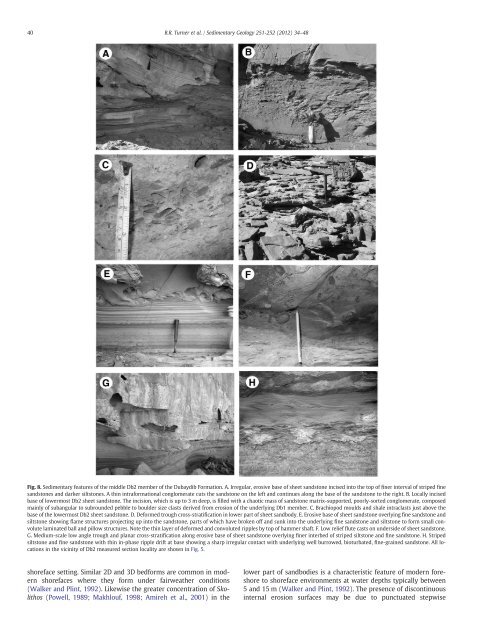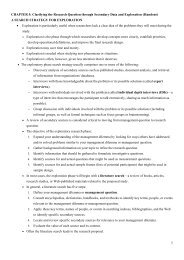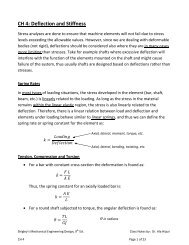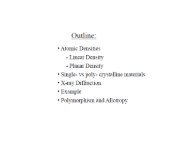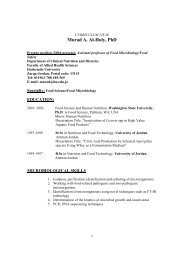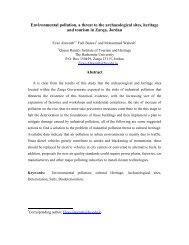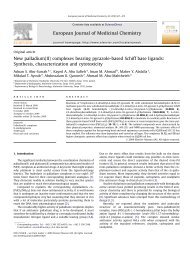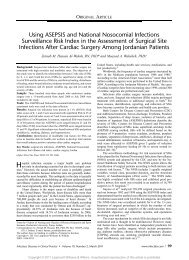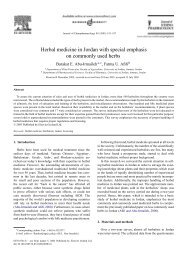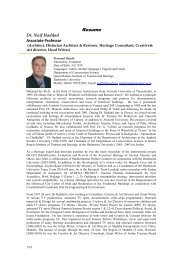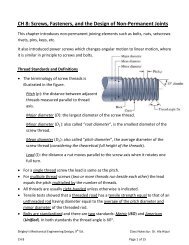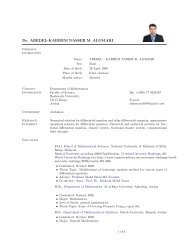High frequency eustatic sea-level changes during the Middle to ...
High frequency eustatic sea-level changes during the Middle to ...
High frequency eustatic sea-level changes during the Middle to ...
Create successful ePaper yourself
Turn your PDF publications into a flip-book with our unique Google optimized e-Paper software.
40 B.R. Turner et al. / Sedimentary Geology 251-252 (2012) 34–48<br />
Fig. 8. Sedimentary features of <strong>the</strong> middle Db2 member of <strong>the</strong> Dubaydib Formation. A. Irregular, erosive base of sheet sands<strong>to</strong>ne incised in<strong>to</strong> <strong>the</strong> <strong>to</strong>p of finer interval of striped fine<br />
sands<strong>to</strong>nes and darker silts<strong>to</strong>nes. A thin intraformational conglomerate cuts <strong>the</strong> sands<strong>to</strong>ne on <strong>the</strong> left and continues along <strong>the</strong> base of <strong>the</strong> sands<strong>to</strong>ne <strong>to</strong> <strong>the</strong> right. B. Locally incised<br />
base of lowermost Db2 sheet sands<strong>to</strong>ne. The incision, which is up <strong>to</strong> 3 m deep, is filled with a chaotic mass of sands<strong>to</strong>ne matrix-supported, poorly-sorted conglomerate, composed<br />
mainly of subangular <strong>to</strong> subrounded pebble <strong>to</strong> boulder size clasts derived from erosion of <strong>the</strong> underlying Db1 member. C. Brachiopod moulds and shale intraclasts just above <strong>the</strong><br />
base of <strong>the</strong> lowermost Db2 sheet sands<strong>to</strong>ne. D. Deformed trough cross-stratification in lower part of sheet sandbody. E. Erosive base of sheet sands<strong>to</strong>ne overlying fine sands<strong>to</strong>ne and<br />
silts<strong>to</strong>ne showing flame structures projecting up in<strong>to</strong> <strong>the</strong> sands<strong>to</strong>ne, parts of which have broken off and sunk in<strong>to</strong> <strong>the</strong> underlying fine sands<strong>to</strong>ne and silts<strong>to</strong>ne <strong>to</strong> form small convolute<br />
laminated ball and pillow structures. Note <strong>the</strong> thin layer of deformed and convoluted ripples by <strong>to</strong>p of hammer shaft. F. Low relief flute casts on underside of sheet sands<strong>to</strong>ne.<br />
G. Medium-scale low angle trough and planar cross-stratification along erosive base of sheet sands<strong>to</strong>ne overlying finer interbed of striped silts<strong>to</strong>ne and fine sands<strong>to</strong>ne. H. Striped<br />
silts<strong>to</strong>ne and fine sands<strong>to</strong>ne with thin in-phase ripple drift at base showing a sharp irregular contact with underlying well burrowed, bioturbated, fine-grained sands<strong>to</strong>ne. All locations<br />
in <strong>the</strong> vicinity of Db2 measured section locality are shown in Fig. 5.<br />
shoreface setting. Similar 2D and 3D bedforms are common in modern<br />
shorefaces where <strong>the</strong>y form under fairwea<strong>the</strong>r conditions<br />
(Walker and Plint, 1992). Likewise <strong>the</strong> greater concentration of Skolithos<br />
(Powell, 1989; Makhlouf, 1998; Amireh et al., 2001) in <strong>the</strong><br />
lower part of sandbodies is a characteristic feature of modern foreshore<br />
<strong>to</strong> shoreface environments at water depths typically between<br />
5 and 15 m (Walker and Plint, 1992). The presence of discontinuous<br />
internal erosion surfaces may be due <strong>to</strong> punctuated stepwise


